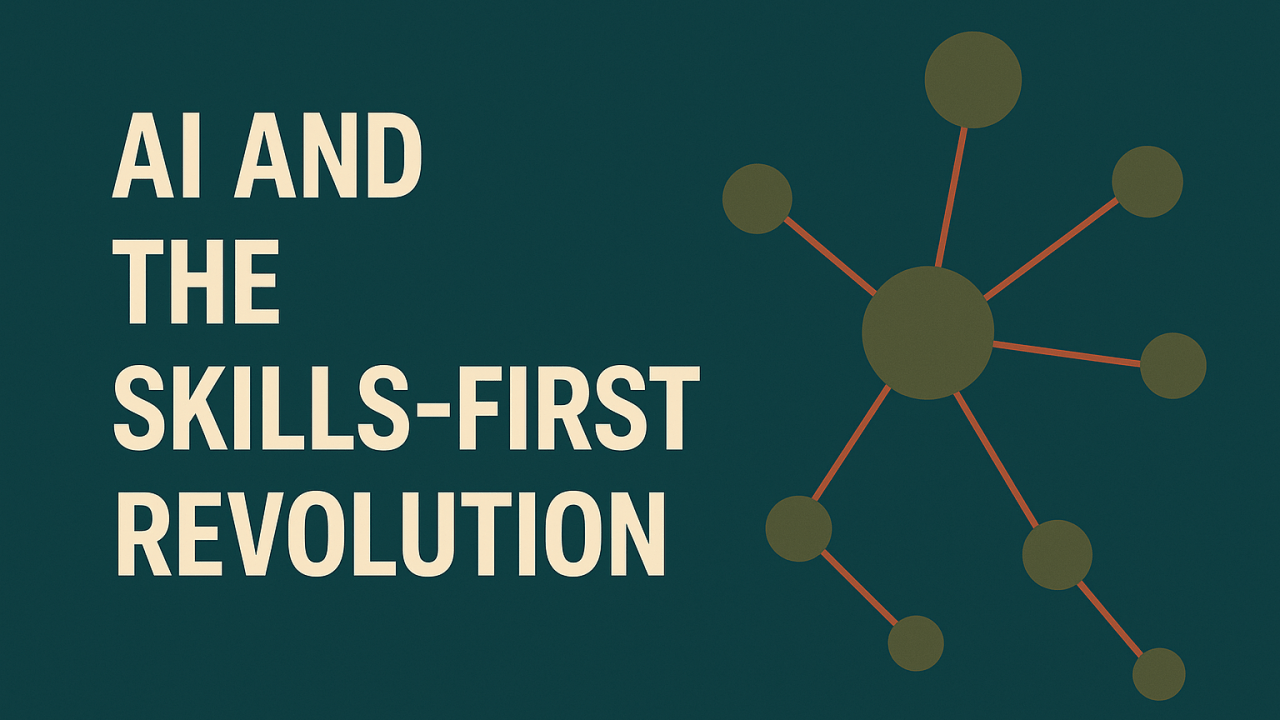How AI-powered ontologies and dynamic taxonomies are reshaping workforce planning, learning, and mobility
The Great Shift: From Job Titles to Skills
For decades, organizations have operated on a job-title mindset — defining employees by roles rather than capabilities. But in 2025, that paradigm is breaking down. Automation, hybrid work, and emerging technologies have blurred the boundaries between functions. The most progressive organizations—those we now call Skills-Based Organizations (SBOs)—are realizing that true agility doesn’t come from rigid job structures. It comes from understanding what skills people have, what they can learn, and where those skills can go next.
The world’s talent economy is shifting from “Who you are” to “What you can do.” That’s the essence of the skills-first revolution—and it’s powered by AI, dynamic taxonomies, and ontologies that understand the deep relationships between skills, roles, and learning paths.
Understanding the Foundation: Taxonomy and Ontology in Simple Terms
In a traditional HR system, skills data often looks like a flat list — disconnected, outdated, and hard to search. But AI changes that.
- A taxonomy organizes skills into hierarchies — for example: “Technology → Programming → Python → Machine Learning → NLP.” It gives structure and classification.
- An ontology goes beyond that structure to map relationships — it understands that “Python” connects to “Data Science,” “AI Engineer,” and “Analytics,” and that all these roles overlap in certain learning paths.
This combination—taxonomy + ontology—forms the semantic brain of a modern HR ecosystem. It helps the system reason about talent: infer new skills from existing ones, recommend learning paths, and even match candidates to emerging roles that didn’t exist yesterday.
AI at Work: Making Skills Dynamic, Not Static
Static skill lists age fast. According to LinkedIn data, the half-life of a skill is just 5 years—and shrinking. That’s why leading HCM vendors like Oracle, Workday, and SAP are embedding AI-driven skill ontologies into their platforms.
Take Oracle Dynamic Skills, for example. It uses machine learning to:
- Detect emerging skills across industries
- Auto-tag employee profiles based on their activity, learning, or projects
- Infer related skills from resumes and job histories
- Recommend new learning paths to close skill gaps
Similarly, LinkedIn Learning Hub is leveraging AI-driven ontologies to power personalized upskilling—analyzing what’s trending in your industry and suggesting what to learn next.
These systems don’t just catalog what employees know—they predict what they could become.
Workforce Planning Reimagined
In a skills-first organization, workforce planning is no longer about headcount—it’s about capability mapping. AI helps leaders answer questions that were previously impossible:
- What are our emerging skill strengths across geographies?
- Which teams are most ready for AI transformation?
- Where do we have critical skill gaps that threaten innovation?
- How can we reskill displaced roles into high-demand functions?
AI-powered ontologies provide real-time visibility into the organization’s collective skill DNA. When integrated with cloud-native analytics, they can generate predictive insights—like forecasting the impact of an automation initiative or identifying the next wave of internal mobility candidates.
This is workforce intelligence in action—and it’s changing how organizations plan for the future of work.
From Learning to Mobility: Closing the Loop
The beauty of AI-driven taxonomies is that they don’t stop at analysis—they power action.
Once the system understands the relationship between skills, it can:
- Curate learning journeys: suggesting the next course or certification aligned with career goals.
- Enable internal mobility: matching employees with roles they’re 80% ready for and guiding them on the remaining 20%.
- Drive equitable opportunity: ensuring that hidden talent isn’t overlooked because of non-linear career paths.
For example, an employee with “Python,” “Data Visualization,” and “Statistics” might not have “Data Science” on their profile—but the ontology recognizes that they’re a near-perfect fit for that transition. AI bridges that last mile of opportunity.
Why 2025 Is the Tipping Point
The year 2025 marks a turning point for several reasons:
- Generative AI meets HCM Cloud. HR systems are becoming conversational and context-aware—an employee can ask, “What should I learn next to move into an AI role?” and get a data-backed, personalized answer.
- SBO frameworks are maturing. Companies like Unilever, IBM, and Schneider Electric are formalizing skills-first models across global teams.
- Regulation and ethics. With AI now part of employment decisions, explainability and bias-free design are crucial—ontology-driven transparency provides audit trails and fairness.
- Integration across ecosystems. Cloud APIs connect skills data from learning, performance, and recruiting into one unified profile.
Simply put, skills are becoming the new system of record.
The Human Leadership Angle: Curators of Capability
As AI takes over data structuring, the role of HR and business leaders evolves. They become curators of capability—orchestrating skill development, promoting internal talent mobility, and aligning people growth with business strategy.
Leadership in a skills-first era means asking better questions:
- How do we prepare people for roles that don’t yet exist?
- How do we make learning as dynamic as work itself?
- How do we ensure AI-driven recommendations remain inclusive and ethical?
The most successful leaders will not just adopt AI—they will guide it with empathy, governance, and vision.
Future Outlook: The Rise of the Skills Cloud
In the coming years, we’ll see a new architectural layer emerge across enterprise systems: the Skills Cloud—a shared, AI-curated knowledge graph of skills across organizations, industries, and geographies.
Imagine a world where:
- Skills data is portable across platforms.
- Employees carry verified skill profiles like digital passports.
- AI agents continuously evolve those profiles as people learn, collaborate, and grow.
That’s the future AI and ontologies are building—a fluid, connected, skills-based economy where learning never stops and opportunity never sleeps.
Final Reflection
The AI-driven skills revolution is not just a technological upgrade—it’s a mindset transformation. When organizations start thinking in terms of skills, not roles, they unlock the potential to move talent faster, reduce redundancy, and inspire lifelong learning.
In this new world of work, AI is not replacing humans—it’s revealing our potential in sharper focus.
Source: LinkedIn
